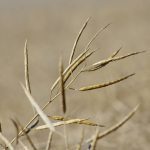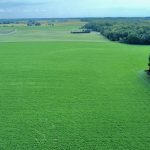BANFF, Alta. — There were no tuxedos, golden statuettes or A-list celebrities posing on the red carpet for idolizing fans.
But for western Canadian plant breeders, last week’s Prairie Grain Development Committee meetings in Banff could be viewed as the plant scientist’s equivalent to the North American film industry’s Academy Awards.
The best and brightest plant breeders brought forward their newest and most promising plant creations to be scrutinized by industry peers and considered for commercial registration.
The winners — or more accurately, the new plant lines that are supported for registration — have a reasonable chance of emerging as the future stars of western Canadian agriculture, crops that could one day be growing on hundreds of thousands, if not millions, of acres of farmland.
Read Also

Canadian-bred cow wins World Dairy Expo Holstein show
A cow bred in Saskatchewan, Lovhill Sidekick Kandy Cane, is the Grand Champion Holstein at the 2025 World Dairy Expo.
Among this year’s emerging stars?
A solid-stem, low cadmium durum line developed at Swift Current, Sask., and a select winter wheat line that could serve as a replacement for CDC Falcon in the eastern Prairies.
The solid-stem durum, known by its pre-registration name DT818, could be a significant breakthrough for western Canadian durum growers, said Agriculture Canada durum breeder Danny Singh.
The solid-stem trait offers natural resistance to the wheat stem sawfly, which can cause significant economic losses due to reduced yields, grade discounts and increased fuel and maintenance costs at harvest time.
Prairie wheat farmers have had access to solid-stem red spring varieties for several years, most notably AC Lillian, but DT818 is the first durum variety to offer the important characteristic.
“Stem solidness is a trait that we are currently lacking in the CWAD (durum) class, so this line would be targeted for the wheat stem sawfly region,” Singh said.
The new winter wheat line, known by its experimental name W478, could be an important addition to the winter cereals industry because it is considered a strong candidate to replace CDC Falcon, a popular CWRW variety in southern Manitoba.
Falcon is slated to be removed from the Canada Western Red Winter Select class, meaning the variety will no longer qualify for the top milling grade or command premium prices from the market.
The new line, developed in Lethbridge by Agriculture Canada wheat breeder Rob Graf, has short, strong straw, maturity a couple of days later than Falcon and a disease package that includes moderate resistance to stem rust, intermediate resistance to leaf rust and fusarium headblight and resistance to stripe rust.
“This is one that could potentially be seen as a replacement for Falcon,” said Graf.
“On the disease side, it’s got a pretty nice package. It doesn’t have resistance to bunt … but we’re working on that so it will be coming in the future.”
Graf said W478 is among a handful of new lines that could fill the void left by CDC Falcon.
AC Flourish, formerly known as W343, has already been registered for commercial production by the Canadian Food Inspection Agency, but seed multiplication is expected to take at least another 18 months.
The first certified seed supplies for Flourish will likely be available to commercial grain growers in the fall of 2013.
Another potential replacement, W454, was supported for registration in February 2011 and is expected to receive CFIA approval within the next few months.
Moats, which was developed at the University of Saskatchewan, has good production potential in the eastern Prairies but has slightly taller straw and is more comparable to CDC Buteo, another variety that is slated to be downgraded from CWRW Select class to CWRW generic.
The list of lines supported for registration this year include:
- four new red spring wheat lines
- three new hard white lines
- two new Canada Prairie Spring red lines
- four new durums, including DT818
- one Canada western red winter line
- one spring spelt
- three milling oat lines
- three new barley lines, including a pair of two-row malts
- one green lentil
- nine yellow pea lines
- two green pea lines
- seven bean lines
- three new flax cultivars
- three general purpose wheat cultivars, including one purple seeded specialty line with high levels of anthocyanin, an anti-oxidant compound that is also common in grapes and blueberries.















